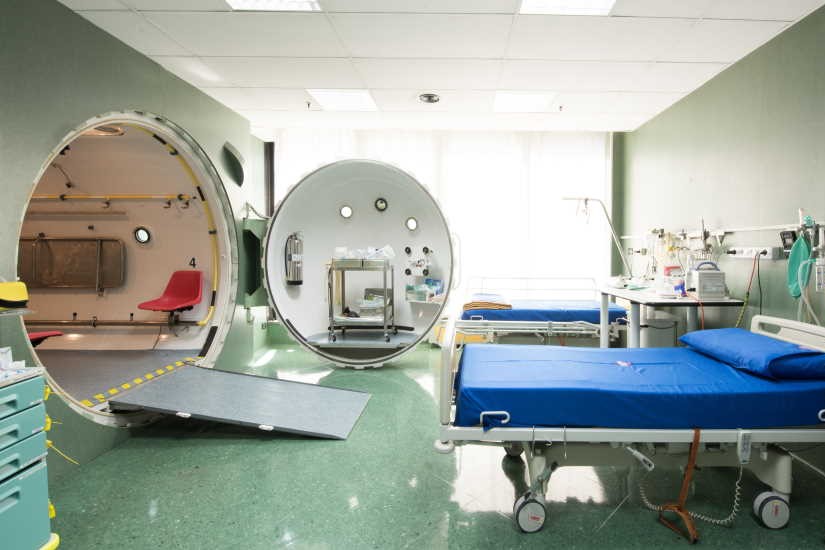
Hyperbaric oxygen in the wound healing process
Hyperbaric oxygen: Chronic and difficult-to-heal wounds, such as ulcers in the diabetic foot or radiation injuries, are accompanied by a significant impact on the number of working hours lost, with inevitable and significant negative effects on the quality of life of those affected
The management of these types of wounds requires several complex actions: careful surgical cleaning of the wound, targeted antibiotic treatment, advanced dressings, and even revascularisation.
Hyperbaric oxygen for wounds in which the danger is tissue hypoxia
These wounds are unfortunately characterised by a scarce supply of oxygen, resulting in a more or less marked hypoxia of the tissue and the affected area.
Hyperbaric Oxygen Therapy (OTI) is an extremely powerful adjuvant treatment in these cases
OTI can significantly increase the amount of dissolved O2 in the plasma, thus increasing tissue oxygenation and promoting the healing of wounds that do not respond to normal clinical care.
The increased partial pressure of oxygen, which can be achieved with OTI, contributes to covering the energy requirements of the healing process and reducing the incidence of infection.
TREATMENT OF BURNS IN RESCUE OPERATIONS: VISIT THE SKINNEUTRALL BOOTH AT EMERGENCY EXPO
Studies in cell cultures and animal models appear to confirm the beneficial effects of hyperbaric oxygen.
However, the lack of indisputable and conclusive results in the clinical studies conducted so far calls for caution in the selection of cases; the authors conclude that further randomised controlled clinical trials versus placebo are needed to confirm the real effectiveness of hyperbaric oxygen therapy in these cases and to clarify in detail its mechanism of action in the various types of wounds.
Read Also:
Ozone Therapy: What It Is, How It Works And For Which Diseases It Is Indicated
Oxygen Ozone Therapy In The Treatment Of Fibromyalgia


